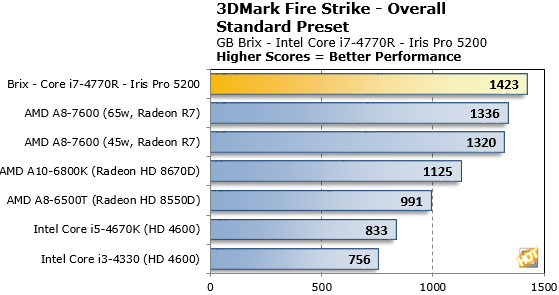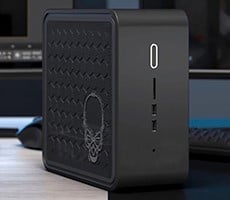Gigabyte BRIX Pro And Intel Iris Pro Graphics Review
Graphics Benchmarks and Game Testing - Intel Vs AMD Integrated Graphics
This is where things start to get interesting with the Gigabyte BRIX Pro. In the following game benchmarks and actual in-game testing, we're specifically pitting Intel integrated graphics solutions versus similar solutions from AMD APUs. Its Intel Iris Pro Graphics 5200 versus the most recent Kaveri APU offering from AMD with AMD's GCN (Graphics Core Next) GPU architecture. Traditionally, Intel has been at a marked deficit versus AMD when it comes to graphics horsepower. Let's see if that still stands today.|
|
|
3DMark Fire Strike has two benchmark modes: Normal mode runs at 1920x1080, while Extreme mode targets 2560x1440. GPU target frame buffer utilization for normal mode is 1GB and the benchmark uses tessellation, ambient occlusion, volume illumination, and a medium-quality depth of field filter. The more taxing Extreme mode targets 1.5GB of frame buffer memory and increases detail levels across the board. For the following tests, we ran the benchmark in Normal mode since we were testing integrated graphics solutions, versus high-end discrete GPUs.




In 3DMark Fire Strike, the Gigabyte BRIX Pro with the Intel Core i7-4770R once again edges out the competition but by only a small margin of 5 - 8% at most. In the GPU Test 2, AMD's Radeon R7 core in the A8 is much closer to Intel's Iris Pro 5200 Graphics. This test (GT2) focuses more on particle and GPU simulation with higher required pixel processing throughput, whereas GPU Test 1 focuses more on lighting and geometry.








